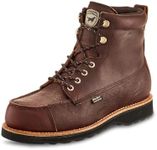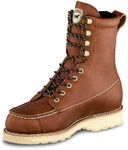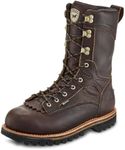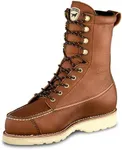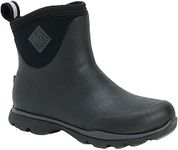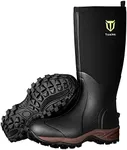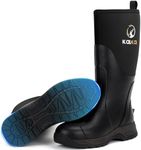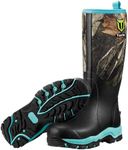Buying Guide for the Best Hunting Boots For Cold Weather
Choosing the right hunting boots for cold weather is crucial to ensure comfort, warmth, and safety during your outdoor adventures. The right pair of boots can make a significant difference in your hunting experience, keeping your feet warm and dry while providing the necessary support and traction. When selecting hunting boots, consider the following key specifications to find the best fit for your needs.InsulationInsulation is the material inside the boots that helps keep your feet warm by trapping heat. This spec is important because it determines how well the boots will perform in cold weather. Insulation is usually measured in grams, with higher values indicating more warmth. For mild cold, 200-400 grams of insulation may suffice. For moderate cold, 400-800 grams is recommended. For extreme cold, 1000 grams or more is ideal. Choose the insulation level based on the temperatures you expect to encounter and your activity level, as more active hunters may need less insulation.
WaterproofingWaterproofing ensures that your feet stay dry in wet conditions, which is essential for maintaining warmth and comfort. This spec is important because wet feet can quickly become cold feet, leading to discomfort and potential health issues. Look for boots with waterproof membranes like Gore-Tex or other proprietary technologies. If you expect to encounter a lot of water or snow, prioritize boots with high-quality waterproofing. For drier conditions, water-resistant boots may be sufficient.
MaterialThe material of the boots affects their durability, weight, and breathability. Common materials include leather, synthetic fabrics, and rubber. Leather is durable and offers good protection but can be heavier. Synthetic materials are often lighter and more breathable but may not be as durable. Rubber is excellent for waterproofing but can be less breathable. Choose the material based on the terrain and conditions you will be hunting in. For rugged terrain, durable materials like leather are preferable. For lighter, more breathable options, consider synthetic materials.
Sole and TractionThe sole and traction of the boots determine how well you can navigate different terrains. This spec is important for safety and stability, especially in slippery or uneven conditions. Look for boots with deep lugs and aggressive tread patterns for better grip. If you will be hunting in icy or snowy conditions, consider boots with specialized soles for enhanced traction. For general use, a versatile sole with good traction will suffice. Match the sole type to the terrain you expect to encounter most frequently.
Fit and ComfortFit and comfort are crucial for long hours of wear. This spec is important because ill-fitting boots can cause blisters, discomfort, and even injury. Ensure the boots have enough room for your toes to move but are snug enough to provide support. Consider trying on boots with the socks you plan to wear while hunting. Look for features like padded collars, cushioned insoles, and adjustable lacing systems for a better fit. Prioritize comfort and support to ensure you can stay focused on your hunt without being distracted by foot pain.
HeightThe height of the boots affects the level of protection and support they provide. This spec is important for keeping debris, water, and snow out of your boots. Taller boots (8-10 inches) offer more protection and support, making them suitable for rough terrain and deep snow. Mid-height boots (6-8 inches) provide a balance of support and flexibility, ideal for mixed terrain. Low-height boots (below 6 inches) are lighter and more flexible but offer less protection. Choose the height based on the conditions you will be hunting in and your preference for mobility versus protection.
